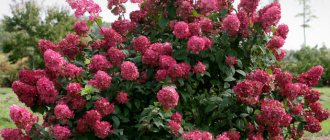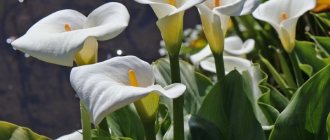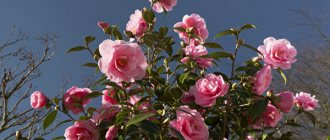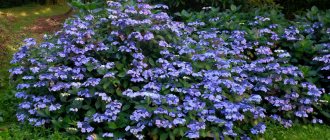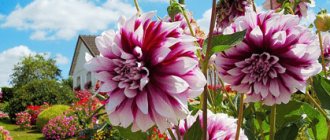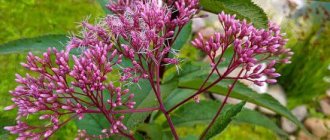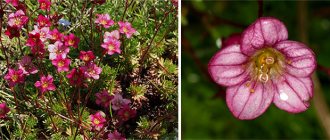All flower plants, grown in plots or flower beds, always decorate the place in which they grow. They make it more cozy and add zest. Flowers and shrubs look especially beautiful in various combinations. Very often, to decorate an area, a beautiful flower is chosen, which has interesting, wide foliage, and the leaf is quite elongated on one side. We are talking about hydrangea. Pink hydrangea is very beautiful, so it is often planted to make the area more colorful.
Description of pink hydrangea
Garden pink hydrangea is a shrub of the Deciduous family. Often used to decorate public gardens, parks and, of course, garden (country, village) plots. There are two types of such hydrangea - tree and paniculate. In Russian realities, the first option is most often planted.
Hydrangea pink
Origin
The plant is native to East Asia. The largest number of species grows in Japan and China. It was brought to Europe only in the 14th century - to decorate the gardens of representatives of the upper classes of England and France.
At the beginning of the 16th century, hydrangea appeared in Russia, but only in two colors - white and pink.
Peculiarities
Delicate pink hydrangea blooms magnificently, with large inflorescences. Small flowers in the center, larger ones on the sides. It is this feature that makes the plant so interesting and unusual.
Interesting fact! The shade of the inflorescences of one bush can change from white to pink, this is due to the influence of a special substance - anthocyanin. At the same time, in acidic soil the flowers may turn completely blue.
The tree type of plants is most often used. The shrub grows up to 1 meter in height. The leaves have a rich green color, an elongated shape, closer to an oval, and last until mid-autumn (the first frost).
Pink hydrangea bush
Pros and cons of the variety
Hydrangea is distributed throughout the country. The plant has certain advantages:
- wide range of colors and shades;
- withstands wintering without replanting;
- rapid regeneration (after temperature changes, pruning, and other negative aspects);
- immune to insects and diseases.
Disadvantages include care, soil requirements and other specific disadvantages inherent in specific varieties.
Winter hardiness
North American varieties, which appeared in the 80s of the twentieth century, can withstand temperatures down to -15 ° C. Species bred in Europe overwinter at -20 °C. Frost-resistant species include:
- Firewox Pink (“pink fireworks”);
- White Ball (“white ball”);
- Blue Haven (“blue sky”);
- Red Sensation (“red sensation”) and others.
These varieties are suitable if winter temperatures allow. Otherwise, a transplant or special shelter will be required.
Vanilla Fraze
This shrub attracts with dense pyramidal two-colored inflorescences. The top part is white and the bottom part is light pink, making the buds look like an ice cream cone.
Weems Red
The shrub is one of the frost-resistant varieties. Among others, it is the most attractive due to the original coloring of the petals. When they bloom, they change color from white to red and bright burgundy.
Grandiflora
This beautiful variety is a late bloomer and grows mainly in the southern regions. What makes it especially attractive is the change in shades of flowers several times during the flowering season. Initially the buds are white. As they bloom, they acquire a creamy hue, and at the end they become red-greenish. Even with the capriciousness of cultivation, paniculata Grandiflora is especially loved by gardeners.
Diamond Rouge
Impressive with colorful flowering with petals changing from snow-white to pink. The emerald leaves, which acquire orange shades with the onset of autumn, also add decorative value.
Pinky Winky (Pinke Winke)
This is a very beautiful variety, delighting with two-color flowering from mid-summer to autumn. The cone-shaped inflorescences are white at the top and purple at the bottom. In autumn, the leaves turn yellow.
Pink Diamond
This variety has gained particular popularity among gardeners due to the height of the bushes, reaching 2 m. They are suitable for planting in a large garden area. Paniculata Diamond blooms with beautiful cream flowers, which later turn pink and red.
Sunday Frize
The bushes of this variety of paniculate hydrangeas are distinguished by a spreading crown, which is difficult to give a specific shape. But they are still popular among gardeners because of the special beauty of the inflorescences. Paniculata Fries can change color from pale emerald to soft pink.
Silver Dollar
One of the few varieties of hydrangeas that pleases the eye with pale yellow colors. But as they bloom, the buds change color, eventually becoming almost white or silver-pink. The oval-shaped bright green leaves also give the plant a special attractiveness.
Paniculata Phantom
This variety is one of the late-blooming varieties, delighting with its colorful pale lilac blooms from late August to October. A beautiful lush shrub with a spreading crown, Phantom can reach a height of 2 m.
Frize Melba
This relatively young hybrid variety was first introduced to gardeners in 2014. But thanks to its ease of care and lush inflorescences, it quickly became popular. The bushes grow slowly, but can reach 2 meters. Fraze impresses with interesting transformations in the shades of flowers. At first they have a milky tint, which turns into light pink and then into wine red. Sometimes on one inflorescence there are flowers of different colors, which gives the plant a bewitchingly beautiful appearance.
Limelight
The shrubs reach up to 2 m and bloom with large white inflorescences, which at first have a greenish tint. When grown in the shade, they never turn white.
Kyushu
The shrub, up to 2 m high, blooms with beautiful white flowers that have a pleasant aroma. Attracts with long flowering until October.
Magical fire
Many people are attracted to this variety by its colorful range of inflorescences. In most cases, the flowers are fiery red in color, which is what gave the varietal name.
Magical Sweet Summer
This beautiful ornamental variety has reddish shoots and blooms with greenish-white and subsequently pink flowers from July to September.
polar bear
The large flowers received such an interesting name not only for their snow-white color, like the fur of this polar animal, but also for their excellent resistance to frost. This blooming hydrangea delights the eye with its enchanting lush inflorescences.
Airlie Sensation
This unpretentious and cold-resistant extensive shrub resembles a miniature lilac, which has won the special sympathy of gardeners. Its lush flowering is especially long-lasting. The flowers are initially cream, then acquire a pink tint, and then become burgundy.
Varieties and varieties of pink and soft pink hydrangeas
There are many varieties of hydrangea with pink inflorescences. In the Russian climate, the following varieties performed best.
Kumiko
Hydrangea blue or blue - planting and care in open ground
The official name of the variety is Hydrangea macrophila "Kumiko". The ornamental shrub has straight stems and shoots, at the ends of which large spherical inflorescences are formed.
The variety is considered relatively frost-resistant (withstands down to -18 ° C), but requires special covering for wintering in northern latitudes.
Attention! This variety of hydrangea, unlike others, tolerates a little shade, so it is permissible to plant bushes near the house or trees.
Bella Anna
The variety differs in the size of the inflorescences - up to 20 cm (usually about 25 cm). The tree grows up to 1.3 m in height. The period of active flowering reaches three months.
The leaves are light green in color with clearly visible veins; after the season they acquire a yellowish tint.
For reference! The variety is picky about the choice of soil, loves abundant watering, and is loved by landscape designers.
Bella Anna
Sweet Fantasy
A large-leaved variety of pink hydrangea with the scientific name Hydrangea macrophylla Sweet Fantasy.
The plant reaches a height of no more than 1.2 m. The brightest color is red with rich splashes along the edges.
It blooms on the shoots of the current and next seasons. Recovers quickly after wintering.
Hanabi Rose
Low variety - maximum height 80-100 cm. The inflorescences are flattened, reaching 25 cm in diameter. The petals are pale pink, slightly terry to the touch. It quickly forms shoots and delights with flowers on the stems of the current and last seasons.
Pink pinkushen
Tree type hydrangea. The bush grows spreadingly, with a large number of shoots.
Pink Pincusion blooms for three months - from June to August. Often used to decorate parks and areas. The diameter of the inflorescences is no more than 15 cm.
For reference! The decorative version of the variety can withstand frosts down to -25 °C.
What to plant next
Next to the tree hydrangea, low-growing and ground cover plants in green, pink or white shades, as well as shrubs, whose decorative peak occurs in the spring months, will find their place.
- Ground cover plants to maintain soil moisture and allow as few weeds to grow as possible. Periwinkle or tenacious are suitable for this role - they grow well in partial shade.
- Low hedges made of holly, boxwood, barberry, spirea or even dwarf thuja: they will support large inflorescences and create a clear outline of the composition.
- Larger shrubs with spring flowering: mock orange, gray spirea, lilac, forsythia, almond. This way the composition will remain decorative throughout the season.
- Ferns, hostas, mantle and astilbe will complement hydrangea in a mixborder, adding structure and shades
- Decorative coniferous plants will serve as a spectacular backdrop for our shrubs and will help acidify the soil.
You can experiment with bright shades near the hydrangea if you like compositions with a dense concentration of color, like stained glass windows or kaleidoscopes.
You can assemble a composition only from hydrangeas with different shades and vigor of growth to form a multi-level three-dimensional landscape.
Planting in open ground
It is necessary to familiarize yourself with the rules for planting and caring for pink hydrangea in open ground in advance - the plant is picky about choosing a location and does not tolerate frequent replanting.
Selection and preparation of site and soil
Pink hydrangea - how to care for pink hydrangea in the garden
Place is the first and quite important point. Hydrangea of all varieties does not tolerate shade (some tolerate partial shade - a rare feature), constant replanting, and as a result, it stops growing and blooming. The soil should be clayey and fairly acidic. Peat, sawdust or pine needles can be added to neutral soil.
Attention! The plant does not tolerate direct sunlight - in such places the flower will not have enough moisture. Therefore, it is important to choose a sufficiently lit, but not bright place (for example, next to a larger tree).
The planting hole is prepared in advance - 50*40*40 cm. Fertilizers (humus, river sand, superphosphates and others) are added.
Planting hydrangea
Which plants are best to plant next to?
Hydrangea is a large-leaved perennial shrub, so you should not plant annual varieties nearby (unless you want to renew the design of the site every year). It is important to take into account not only the color scheme of the “neighbors”, but also general compatibility - similar requirements for soil, frequency and abundance of watering, and other points. Most often used:
- ferns - allow you to create an interesting foliage pattern on several levels;
- periwinkles, ivy - low-growing varieties frame the bottom of hydrangeas;
- the mantle is soft - they have lighter leaves, adding shine to the composition.
Other options are bergenia, hostas, lilacs, mock oranges, hydrangeas and many others. The most colorful combination is considered to be cereals (hakonechloa, falaris, millet).
When and how to plant
In the southern regions and Moscow region, hydrangea is planted in the fall, in Siberia - only in the spring.
In a pre-prepared hole, a small mound is formed, where the seedling is placed - the roots are carefully distributed around. The planting hole is completely filled up, abundant watering is required.
Reviews
This plant is especially popular among gardeners and has earned many positive reviews:
- thanks to its good winter hardiness, large-leaved hydrangea can withstand different temperature changes without freezing and blooms colorfully every year;
- can grow both in the sun and in a shaded place, which allows its cultivation in any corner of the garden;
- easily propagated by different parts, which significantly reduces the cost of purchasing new seedlings;
- goes well with and tolerates the proximity of other ornamental vegetation, which makes it possible to create the most unusual and unique composition in the garden.
Plant care
Hydrangea Grandiflora - description, planting and care in open ground
Pink hydrangea needs balanced nutrition and care. If all requirements and rules are met, the plant will produce lush and bright flowering.
Watering
The shrub loves regular and abundant watering - up to 30 liters every week. Before the procedure, the soil is dug up - about 5-10 cm.
In addition to moistening the soil, it is necessary to spray the foliage with a spray bottle.
Fertilizer and feeding
It is especially important to provide additional nutrition only to planted plants. Mineral fertilizers are applied every spring - potassium sulfate is required. The second time - at the moment the buds appear, then in the fall.
Mulching and loosening
The right mulch will retain moisture in the soil, and timely loosening will provide the necessary amount of oxygen to the roots. Suitable for mulching hydrangeas:
- shredded bark (presence of o or “composted” is important);
- coffee grounds - oxidizes the soil, can be taken from a cafe or coffee shop;
- peat moss;
- pine straw and others.
It is important to consider that certain types of mulch reduce the acidity of the soil, which affects the color of the buds. Loosening is carried out regularly at a distance of 50-60 cm around the bush. Depth - no more than 10 cm, so as not to damage the root system.
Mulching hydrangeas helps retain moisture in the soil
Trimming
The main pruning - the formation of a bush - is carried out in early spring (late March). The pruning shears must be treated with a disinfecting solution and sharpened.
Important rules:
- It is unacceptable to cut off branches manually;
- the weather should be sunny and calm;
- stumps and cuts must be treated with garden varnish or its substitutes.
Cut at a slight angle. If the bush has already grown, you cannot prune all the branches at once; it is better to do a complete pruning in stages.
Preparing for winter
Most varieties of pink hydrangea require additional shelter for the winter. Main methods:
- sprinkling with leaves or sawdust;
- construction of “boxes” for each bush from boards or mesh, covered with polyethylene or other covering material on top.
Attention! With the onset of spring, it is not recommended to open the plants immediately - if mold is found, it is simply washed off (it does not harm the bushes).
Fertilizers: fertilizers and microelements
In the first year after planting, the plant is not fed, since the hydrangea has enough nutrients that were added to the planting hole. The following year, in the spring, complex mineral fertilizers are applied to the bushes in the concentration recommended by the drug manufacturers. The best fertilizers for pink hydrangea are organic. Until mid-summer, an infusion of fermented mullein can be used as a nitrogen supplement, which is prepared as follows: add 3 liters of water to 6-7 kg of manure and leave the mixture to ferment for 3-4 days. Dissolve 1 liter of infusion in a bucket of water and water the hydrangea once every 10-15 days. Not only tree-like hydrangea is responsive to high-quality organic matter, but also pink paniculata hydrangea, which is quite reasonable, since the plants belong to the same family.
In the absence of organic fertilizers, mineral fertilizers are quite suitable, the most suitable of which for hydrangea are superphosphate, urea and potassium sulfate. In the second half of summer, feeding with urea is stopped, leaving phosphorus-potassium to strengthen the plant for wintering. The frequency of applying fertilizer is as follows: the first time in the spring, the second time when buds appear, the third time in the fall. Rapid growth of shoots is ensured by feeding the plant with a weak solution of manganese, which is carried out in early summer. Fertilizers containing lime and phosphorus will maintain the excellent pink hue of the inflorescences.
Reproduction
The easiest way is to buy seedlings in special receivers. The disadvantages are the cost, lack of the desired variety. Hydrangea can be propagated independently using the following methods.
Growing from seeds
The seeds of the plant do not require pre-treatment; they are immediately planted in pots (boxes, etc.). The soil is moistened, the seeds are not buried, covered with film or glass. The first shoots appear on average after three weeks.
Cuttings
The optimal way to propagate pink hydrangea is by cuttings. The time of bud formation (mid-July) is considered suitable. They use a green cutting - part of the stem with leaves and buds.
Attention! Cuttings are cut only from young bushes. If there are “old” plants on the site, “rejuvenating” pruning is first carried out.
Cuttings of hydrangea at home
Dividing the bush
This method is used only during plant transplantation. It is permissible to separate bushes of all types of hydrangea (except paniculata).
Period - spring (with the onset of warmth, but before flowering begins). First, water the bush well, then dig it up. The roots are washed from the ground and separated.
By layering
The method is used in early spring, before bud formation. Stages of work:
- Hill up the bush and level the ground.
- Create radial furrows, no more than 2 cm deep.
- Place one stem in each, sprinkle, but leave the top on the surface.
Attention! To prevent the stems from “popping out,” they are sprinkled with earth or pinned with wooden cuttings. During the summer, the sprinkled shoots are watered, achieving light soil moisture.
Bush formation and pruning
Pink tree hydrangea is an ornamental plant and its appearance directly depends on quality care. The main caring measures include pruning. Like many leafy shrubs and trees, hydrangeas require formative and sanitary pruning. In early spring, old, diseased, branches that were broken in winter or that thicken the bush are cut out. Since hydrangea loves semi-shaded places, the issue of thickening is acute: the lack of sufficient light and high humidity can provoke the occurrence of bacterial or viral infections in dense overgrown shrubs. This is why crown thinning is so important: for productive development, each branch must receive enough sunlight. This is the role of sanitary spring pruning. At the same time, the crown of the bush is formed by shortening annual shoots so that 5-6 pairs of growth buds remain on them.
For the second time in the season, hydrangea is pruned in the fall after flowering, removing dry inflorescences, broken stems and small shoots that have appeared.
Old but productive bushes that have grown and are beginning to lose their shape can be rejuvenated in the fall by cutting off all the stems to a height of 20-30 cm. Fresh shoots will appear the next year.
How to change the color of a pink hydrangea
The petals of a plant can change color due to certain chemical reactions - white can turn pink, then blue. Homemade ways to change the color of inflorescences:
- watering with diluted aluminum salt, citric acid - allows you to get blue and blue colors (the rarest);
- adding dolomite flour and lime changes the color from white to pink.
In the first case, the acidity of the soil increases, in the second it decreases, the soil becomes more alkaline.
Preparing for landing
Hydrangea broadleaf should be planted on a cool, gloomy day or before rain, when the bright sun is not shining and the weather is calm. The best time for this is from late April to mid-May in spring or early October in autumn. Before planting in open ground, several procedures should be carried out for better survival of the bushes.
- When planting several specimens, maintain a distance of at least 1 m between them.
- If possible, select 2-3-year-old seedlings with a closed root system in the nursery, planted in a mixture of sand, peat, and sawdust.
- Prepare a permanent place for the bush by digging up the ground, adding peat, sand, leaf turf, and humus in equal parts.
- Dig holes 35-50 cm deep and wide; if there is clay or loam, sand, gravel, broken brick, and crushed stone are poured onto the bottom as drainage.
- A special composition is poured into the holes: for pink, red and fiery red hydrangeas with an acidity pH of 6.0 to 6.2, for blue ones - 5.0-5.5 pH, adding aluminum sulfate to the soil.
The next stage is the direct planting of the bushes in the prepared soil.
- Free the root system of seedlings.
- Place the roots in the hole, straightening them with your hands.
- Make sure that the root collar remains at ground level.
- Cover the roots and compact the mound with your hands.
- Water each bush with 15-20 liters of water.
- Mulch with sawdust, pine needles or pine bark to a height of 5-8 cm.
Many gardeners, at the same time as planting, add organic and mineral fertilizers to the holes to stimulate the formation of flower buds next year. Make sure that the mulch around the bushes always remains moist; this is an important condition for growing hydrangeas. During the summer, the soil is loosened 2-3 times, regularly watered and weeded to remove weeds.
Problems during cultivation
If the plant exhibits poor growth, insufficient or absent flowering, it is necessary to check the light level, amount of watering, and condition of the roots (hilling deeper than 10 cm is prohibited). It is too early to judge if the hydrangea was just transplanted.
Why does pink hydrangea bloom white? For pink hydrangea, soil acidity is important - the permissible level is 6.5 pH (neutral). Under the bush you can add a little crushed chalk or lime, soil with a neutral acidity level. If the soil was alkaline, the color will become normal.
Typical diseases and pests
Diseases manifest themselves from poor conditions - sunburn, excess or lack of watering, disturbed mineral balance. Main diseases:
- chlorosis (lack of iron, oversaturation of lime);
- spots (white, from burns);
- dry blackening leaves (excess sun, high water hardness);
- wet dark leaves (from spraying herbicide fertilizers).
Fungal rot (white, gray), peronosporosis, powdery mildew and others are also possible. Hydrangea pests are standard garden pests (aphids, spider mites, root-knot nematodes, slugs).
If the disease is diagnosed, fungicides are used. If pests have attacked or parasites have settled on the bushes, you will have to buy insecticides.
Dividing the bush
There is another very effective method of propagating a plant such as pink tree hydrangea. The photo introduces the reader to the division of an overgrown bush. They do this in the spring, carefully digging around the bush around the circumference. From the hydrangea removed from the ground, carefully shake off the soil, wash the root system under running water, inspecting the roots and removing damaged and rotten ones, then use a sharp, clean knife to divide the bush into parts, each of which should consist of above-ground stems and healthy roots with several growth buds. The sections are treated with pharmaceutical brilliant green or garden varnish.
The resulting divisions are planted in planting holes prepared as mentioned above, spilled with water with the addition of “Heteroauxin” or “Kornevin” to minimize stress, covered with soil and carefully compacted.
Using pink hydrangeas in landscape design
Hydrangeas often become central elements in the design of plots. For example, the Lady Fries variety is used in mixborders. They take into account not only the compatibility of plants, but also the general style. Paniculaceae are suitable for landscape design in the Russian style, and they are also planted next to artificial reservoirs.
For hedges, several varieties of hydrangea are used, forming them by pruning to the desired size. Single bushes look beautiful if the surrounding lawn is neat and uniform.
Pink hydrangeas are lush and vibrant plants. It needs proper care. But if you take into account the recommendations of experts, you will be able to decorate the area with extraordinary bushes for several years.
The most resistant varieties of large-leaved hydrangea
Remontant varieties of large-leaved hydrangeas are positioned as the most winter-hardy. Their distinctive feature is two waves of flowering due to the rapid ripening of the buds of the current year. Remontant varieties are combined into several series. The most popular of them:
- Endless Summer series (abbr. ES);
- the Forever and Ever series (abbr. FE), created on the basis of the Early Sensation variety, more frost-resistant than ES;
- You and Me series (abbr. YM), almost all varieties of the series are terry.
Pest and disease control
Paniculate hydrangeas practically do not get sick, and most problems arise only from improper care. These are sunburn, poor soil, lack of minerals or improper watering. Leaves dry out, curl or turn black due to sudden changes in temperature or humidity.
Among fungal diseases, hydrangea is affected by powdery mildew, white and gray rot, rust and septoria. Control methods are always approximately the same - remove damaged areas and treat the bush with fungicides. Ring spot is a dangerous virus that prevents flowering and leads to the death of the plant, and the main measure to combat it is prevention.
You must first get rid of leaf aphids mechanically by washing the bush with water or soapy water. It is more effective to combat spider mites immediately with insecticides, but slugs will have to be collected manually. The most dangerous enemy is the nematode, which is almost impossible to remove, so it must be prevented.
Photo: 101-rose.ru
Paniculata hydrangea - photo
Paniculate hydrangeas are very beautiful and spectacular, and also combine wonderfully with each other or with other shrubs. Just look how good they are in gardens and cottages!
Photo: domashniecvety.ru
Photo: mykaleidoscope.ru
Photo: sadnf.ru
Photo: almaty.satu.kz
Photo: orchardo.ru
Photo: mykaleidoscope.ru
Photo: oir.mobi
Photo: oir.mobi
Photo: mykaleidoscope.ru
Photo: domashniecvety.ru
Photo: o-flora.com
Photo: domashniecvety.ru
Photo: sp.bvf.ru
Photo: oir.mobi
Photo: 2sotki.ru
Photo: 23kedr.ru
Photo: oir.mobi
Photo: domashniecvety.ru
Photo: oir.mobi
Photo: flo.discus-club.ru
Photo: maminsad.pp.ua
Photo: sobolevsad.ru
Photo: vita-garden.ru
Photo: vsesorta.ru
Photo: sadoviycentr.ru
Photo: pinterest.ru Photo: sadik.tomsk.ru Photo: mezarasas.lv
Columnar apple tree: varieties, care and cultivation (photo)
